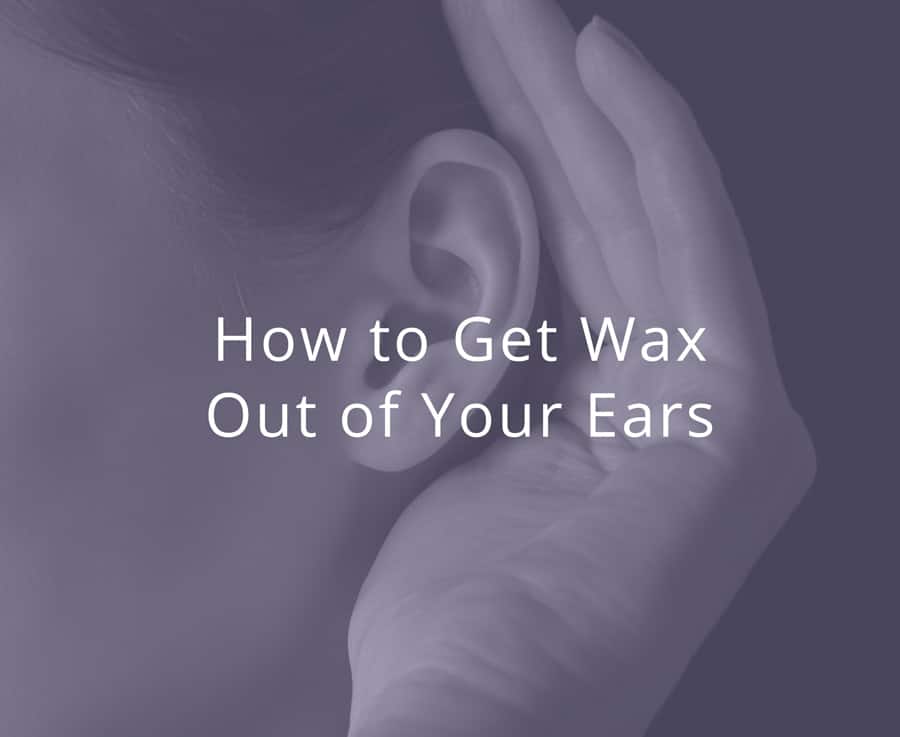There is a commonly held belief that ears need to be cleaned, however the ears are actually self-cleaning organs! Ear wax performs an important function within our ears including cleaning, protecting and lubricating our ear canals. Ear wax is produced in the outer third of the ear canal and is removed by a migrating skin layer which works its way out of the ear canal in a ‘conveyor belt’ motion. This, combined with movement of the soft outer part of the ear through chewing and talking, allows the wax to either fall out of the ear or be wiped away when it reaches the external ear canal.
But what do we do when our ears do not self-clean or wax builds up within our ear canals? Such a build-up can lead to a number of unwanted symptoms including a feeling of fullness or blockage, hearing loss, itching, pain, and tinnitus. It can also inhibit clinical assessment of the ear by preventing a clear view down the ear canal to the ear drum.
Where wax removal is required, it can be tempting to try to remove it on your own. It is important to remember however your ears are very sensitive and the right cleaning method is essential to safeguard the health of your ear and your hearing.
Read below to learn more about the different ways to get wax out of your ears including home remedies, softening drops, or a professional technique like micro-suction.
Earwax Softening Drops
Ear wax softening drops are a good first line of treatment for impacted wax. They can be used only if there is no perforation of the ear drum (seek clinician advice prior if you are unsure as a hole in the eardrum or previous ear surgery may make this remedy unsuitable). Softening drops, normally purchased from your local chemist, are used to both soften and disintegrate the wax built up within your ear canal. They are often used in combination with other wax removal techniques such as micro suction and curettage, to assist in a quicker and more gentle removal of wax. Softening drops may lead to a ‘gap’ being created in the wax, which may provide some temporary relief with respect to the blockage (and help you regain some hearing) prior to manual removal and on occasion may also lead to a complete resolution of impacted wax. This is more likely when the volume of wax is minimal. Drops used at home include olive oil, mineral oil, almond oil, baby oil, a solution of sodium bicarb in water and glycerol.
Click here to learn more about softening drops and how to use them.
Flushing the ears with warm water:
This technique involves softening the wax, then flushing the ear with warm water – either at home or at the GP surgery. This form of manual removal may be available but is not suitable for everyone and is no longer performed at all clinics. Clinician advice should also be sought prior as a hole in the eardrum, previous ear surgery, or a current or suspected infection may deem this technique unsafe.
- Ear candles: Evidence tells us ear candles do not work and may seriously damage your ear canal and ear drum through hair fires, burns to the ear canal and hot wax dripped onto the drum. Placing the candle in the ear may also push wax further down your canal, leading to a worsening of symptoms.
- Cotton buds: The use of cotton buds and other implements in your ear (e.g. bobby pins, toothpicks, ‘corkscrew’ type removers) should be avoided. They may push wax further down the canal, can scratch and lacerate the ear canal, and could poke a hole in your eardrum leading to hearing loss, dizziness, ringing and other symptoms of ear injury.
Factors That May Modify Management of the Removal of Wax
If you are taking blood thinners, have a weakened immune system, have a skin condition such as psoriasis, are a diabetic, have had prior radiation therapy to the head or neck, have narrowing of the ear canal or have a hole in the eardrum, management of impacted wax may need to be altered. Please consult your local GP.
Do’s:
- Understand that earwax is normal: Ear wax that does not block the ear canal or cause symptoms should be left alone
- Familiarise yourself with the symptoms of impacted wax: These include decreased hearing, a feeling of fullness or blockage, ringing in the ears, itching, and a decrease in hearing aid function
- Seek professional help when impacted wax is unable to be removed: Manual removal may be required using small instruments and suction, also known as micro suction and curettage. This is the safe and effective technique used by Ear Nose and Throat specialists across Australia and is the same procedure performed by qualified registered nurses at Earworx. Ear wax should always be softened prior to the procedure unless unsafe to do so
- Seek medical advice if you experience bleeding, sudden hearing loss or pain that you are not sure is related to wax. These are less typically related to wax impaction and may a sign of other conditions
Don’t’s:
- Don’t over clean your ears: The ear is a self-cleaning organ and most of the time wax makes its own way out of the ear without any special treatment
- Use cotton buds or other implements in the ear: You may push wax further down and lacerate the ear canal
- Use ear candles: They do not work and may injure the ear canal and drum
- Home use of oral jet irrigators. There is a risk of injury through build-up of pressure causing damage or pain
Professional Ear Wax Removal via Micro-Suction
For safe and effective ear wax removal, you should turn to ear wax softening drops or manual removal such as micro suction to remedy blocked ears and excess wax.
Micro suction is performed at our dedicated ear wax removal clinics. Small instruments and gentle suction are used to remove wax from the ear canal without the need to touch the ear canal wall or drum which is a common cause of damage. Wax is removed by qualified registered nurses who are experienced in the procedure. Earworx performs wax removal for patients down to the age of 4 years.
Contact Earworx to book an appointment today.





